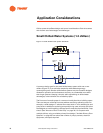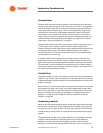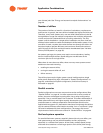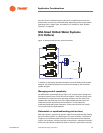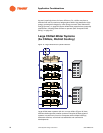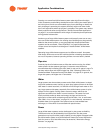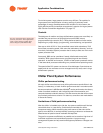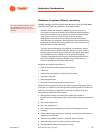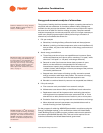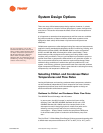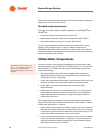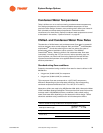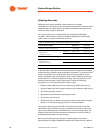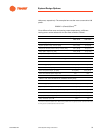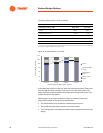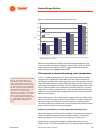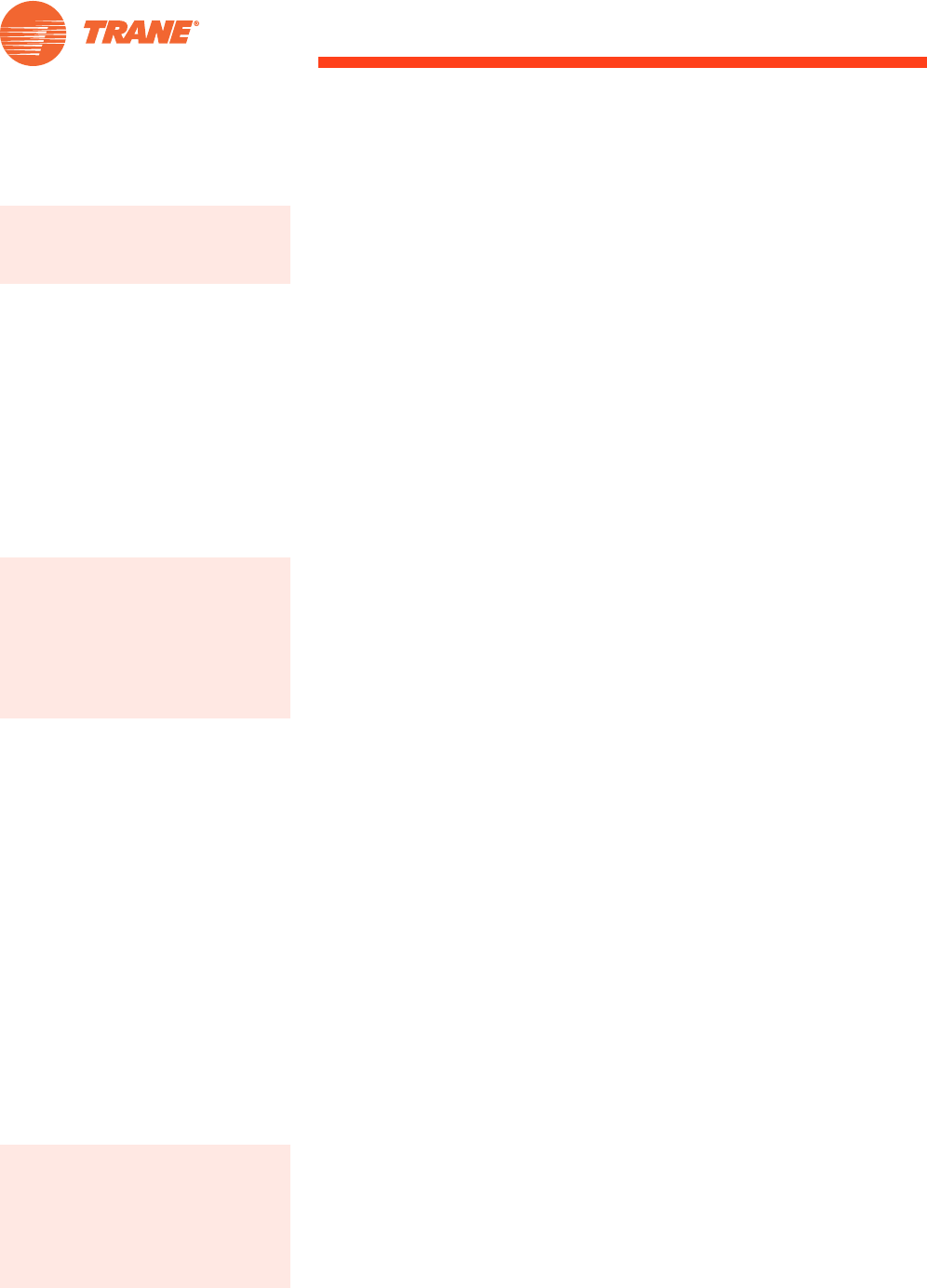
26 Chiller System Design and Control SYS-APM001-EN
Application Considerations
Energy and economic analysis of alternatives
The process of making decisions between multiple, competing alternatives is
simplified with the assistance of simulation software. Many packages are
available for this purpose (see sidebar). While not every analysis will require
the same level of detail for decision-making purposes, computer-assisted
analysis computations are now easy and fast, and it is no longer necessary to
make many simplifying assumptions. When performing a simulation of
alternatives, use software that allows for:
1 Full year analysis
a Schedules, including holidays, affect the loads and the equipment.
b Weather, including coincident temperature, solar, and wind effects will
have an effect, not just on the loads but on the energy performance of
equipment.
2 Actual energy rate definition
a Time-of-day and time-of-year rate capabilities are important. Some
utilities stipulate that some hours and/or months are “on peak,” while
others are “mid peak” or “off peak,” and charge differently.
b Demand or other fixed costs are almost always present in some
fashion, so that utilities are compensated for the amount of
instantaneous capacity they provided. Some rates will include
"ratchet" clauses, which charge a minimum percentage of the previous
12 months’ peak demand.
c Stepped-rates, also known as floating cut-offs, are used to reward
energy consumers with flatter load profiles. The amount of energy
used almost all the time will have the least expensive rate.
d Blended or combined electricity rates are not acceptable (see sidebar).
3 Life-cycle analysis
a First costs are rarely overlooked in an economic analysis.
b Maintenance costs also are likely to be different in each alternative.
c Replacement costs will be important when evaluating alternatives
with equipment not expected to have the same useful life, or if one
alternative is to delay some amount of action by one or more years.
d Escalation factors on recurring costs such as maintenance and energy.
e More advanced economic parameters may be desirable as well to
include financing and tax implications.
For the purposes of achieving ASHRAE Standard 90.1 compliance using the
Energy Cost Budget method, or for certifications under the United States
Green Building Council’s LEED
®
program, software tools must be tested in
accordance with ASHRAE Standard 140. This test is also required for tax
incentives offered by the United States federal government.
Prominent software for energy analysis
includes TRACE™, System Analyzer™,
eQuest, and EnergyPlus.
Blended electricity rates computed from
a full year’s energy cost divided by the
full year’s kWh are not acceptable. Not
every alternative will use energy the
same way, and not every unit of energy
will have the same effective cost. See
Table 2, “Analysis of high-efficiency
chiller options with combined vs actual
rates,” on page 17.
ASHRAE Standard 140
7
was developed
to create a basis for defining and testing
capabilities of energy analysis software
packages. Test results are submitted to
ASHRAE and publicly available before
software is considered compliant with
the Standard.



